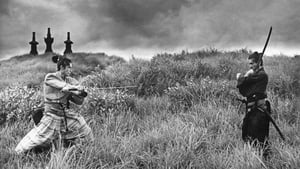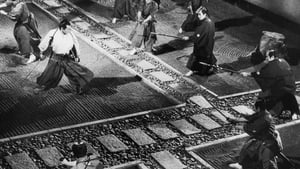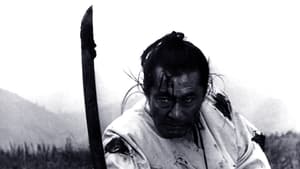Contact: [email protected]
Video Sources 0 Views
- Samurai Rebellion Colorized


Synopsis





Introduction
In the annals of classic cinema, “Samurai Rebellion Colorized” stands as an epitome of storytelling excellence, capturing the essence of feudal Japan. This article embarks on a journey into the heart of this cinematic masterpiece, delving into its historical context, directorial brilliance, and the transformative impact of colorization. As we explore ten surprising facts about the colorized version of “Samurai Rebellion,” the discussion unfolds on the delicate balance between preserving the authenticity of old movies and embracing the possibilities that colorization offers.
Read Media File Transfer Agreement: Terms and Conditions
Read FAQ
1. The Historical Context of “Samurai Rebellion Colorized”
Journey to Feudal Japan
“Samurai Rebellion Colorized” unfolds against the backdrop of feudal Japan during the Tokugawa Regime in the Edo period. This section provides a glimpse into the historical setting, laying the foundation for understanding the complex narrative dynamics that define the film.
2. Understanding the Film’s Plot
Toshiro Mifune’s Yogoro and the Heir Dilemma
Led by the legendary Toshiro Mifune as Yogoro, “Samurai Rebellion Colorized” weaves a tale of familial duty, love, and rebellion against the oppressive forces of the feudal lord. Here, we offer a concise plot summary, giving readers a glimpse into the central conflict that drives the characters.
3. The Directorial Vision of Masaki Kobayashi
Masaki Kobayashi’s Cinematic Tapestry
Masaki Kobayashi, the maestro behind the lens, imprints his unique directorial style on “Samurai Rebellion Colorized.” This section provides an overview of Kobayashi’s contributions to Japanese cinema, emphasizing his impact on the film’s narrative and visual aesthetics.
4. Toshiro Mifune: Bringing Yogoro to Life
The Iconic Portrayal
Toshiro Mifune’s portrayal of Yogoro breathes life into the character, infusing the film with unparalleled intensity. We delve into Mifune’s acting prowess, exploring how his performance contributes to the enduring legacy of “Samurai Rebellion Colorized.”
5. Colorization in Cinema: Balancing the Old with the New
A Controversial Technique
The concept of film colorization is examined in this section, discussing the dichotomy between visual enhancement and potential alteration of artistic intent. We delve into the controversies surrounding colorization, weighing the restoration benefits against concerns about preserving the original integrity of old movies.
6. The Colorized Version of “Samurai Rebellion Colorized”: Enhancing the Visual Experience?
A Chromatic Transformation
An in-depth analysis of the colorized version’s impact on visual aesthetics takes center stage. Through detailed descriptions and potential visual comparisons, we explore how colorization breathes new life into the film and alters the viewer’s experience.
7. Cultural Authenticity in Film Recreations: Depicting Feudal Japan in “Samurai Rebellion Colorized”
Navigating Historical Accuracy
The film’s portrayal of Feudal Japan is scrutinized in this section, evaluating its commitment to cultural authenticity. We examine how “Samurai Rebellion” captures the nuances of the period, enhancing the audience’s connection to the historical narrative.
8. The Art of Color Restoration: Preserving Cinematic Heritage
Meticulous Preservation
The meticulous process of color restoration becomes the focal point, emphasizing the importance of preserving cinematic heritage. This section explores the delicate balance between restoration practices and maintaining the authenticity of classic films.
9. Revisiting a Classic: Critical Reception of the Colorized “Samurai Rebellion”
A Dichotomy of Opinions
Examining the critical reception of the colorized version, we navigate through the diverse opinions of both critics and audiences. Any controversies surrounding the release are dissected, offering insights into the film’s reception in its chromatic form.
10. The Enduring Legacy of “Samurai Rebellion” in Both its Forms
A Cinematic Legacy
This segment reflects on the film’s enduring legacy and its contribution to Japanese cinema. Acknowledging the value of appreciating “Samurai Rebellion” in both its original black-and-white and colorized iterations, it pays homage to the artistry that defines this cinematic gem.
Embracing the Past, Embracing the Future: The Debate Over Colorizing Old Classics
The Ongoing Discourse
The colorization debate takes center stage, presenting arguments from both sides of the spectrum. It examines the dichotomy between artistic integrity and modern appeal, allowing readers to contemplate the merits and drawbacks of colorizing old classics.
Conclusion
A Tapestry Woven in Shades
In conclusion, readers are encouraged to embark on a dual cinematic journey, experiencing “Samurai Rebellion” in both its original and colorized forms. The article emphasizes the subjective nature of the colorization debate, inviting audiences to form their own opinions. As a parting note, a curated list of other colorized films worth exploring is provided, extending the invitation to embrace the rich diversity of cinema.















